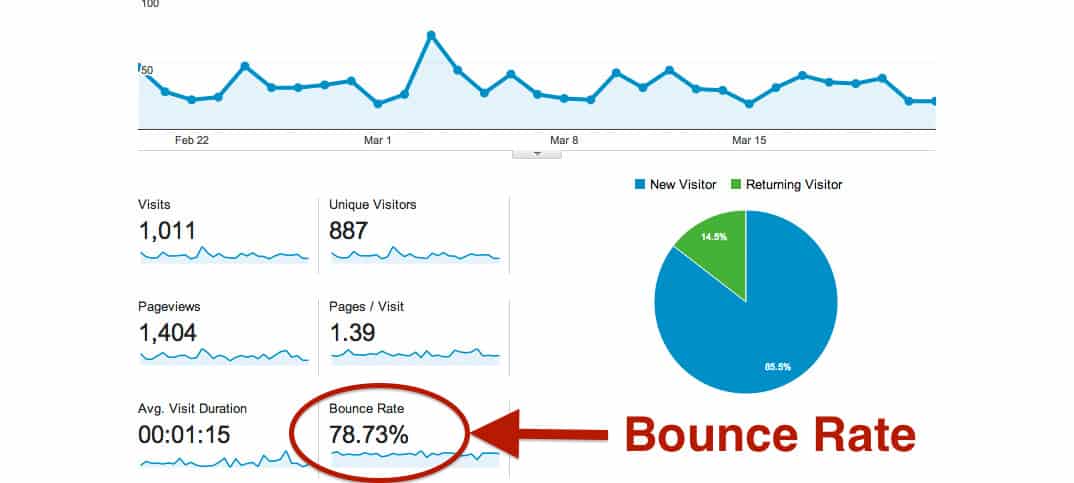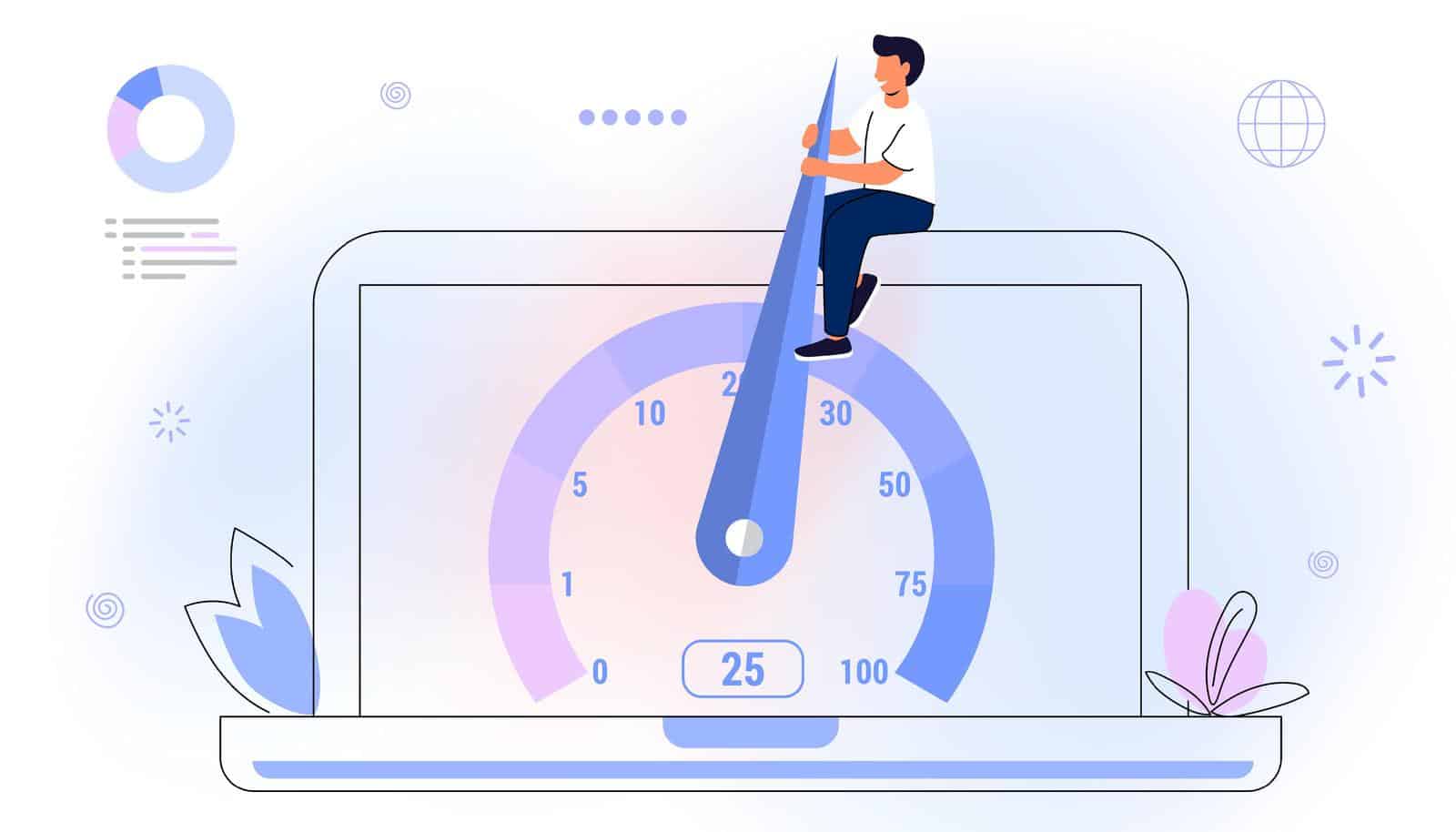Understanding & Improving Your Website’s Bounce Rate (Updated 2023)
Overview
Have you ever been to a website and left within a few seconds?
That’s an example of a “bounce”.
Did you know that the average bounce rate for a website is around 40-60%?
That means almost half of all visitors are leaving a website without exploring further.
A bounce rate measures the percentage of people who visit your site, look at one page, and then leave.
Understanding and improving bounce rate is essential for website owners as it provides valuable insight into the performance of their site.
A high bounce rate can indicate that visitors are not having a positive experience, while a low bounce rate shows that visitors are engaged and finding what they need.
Improving bounce rate can lead to increased engagement, more traffic, higher conversions, and better search engine ranking, ultimately leading to improved business results.
Explanation of Bounce Rate Calculation
Bounce rate is a metric that measures the percentage of visitors who leave a website after viewing only one page.
This metric is calculated by dividing the number of single-page sessions by the total number of sessions.
Single-page sessions refer to instances where a user visits only one page on a website and then leaves.
Understanding Bounce Rate Metrics
Understanding bounce rate metrics provides valuable information about how visitors are interacting with your site.
By analyzing the bounce rate of different pages on a website, you can identify areas that need improvement, such as the quality of content, speed of the site, or usability of navigation.
Bounce rate metrics can also be monitored over time to track the effectiveness of changes made to the site and see if progress is being made towards goals.
What Factors Affect Your Bounce Rate?
The rate at which visitors leave a website after only viewing one page can be influenced by a variety of factors, including website design, content quality, user experience, and more.
Understanding what factors affect your bounce rate can help you make informed decisions about how to improve your site and provide a better experience for your visitors.
In this section, we will explore some of the key factors that can impact bounce rate and how they can be addressed to improve website performance.
Poor Website Design
A poorly designed website with cluttered layouts and unappealing aesthetics can be confusing and overwhelming to visitors.
For example, imagine visiting a website with a busy background, multiple pop-ups, and a confusing navigation structure.
This type of website design can be overwhelming and difficult to navigate, causing visitors to quickly leave the site and resulting in a high bounce rate.
To improve this situation, it’s important to focus on creating a clean and user-friendly design.
This can be achieved by simplifying the layout, using minimal and visually appealing graphics, and improving navigation structure.
For example, using a clean and minimalistic design with clear headings, easy-to-use navigation, and a well-structured layout can help to create a positive user experience and reduce bounce rate.
In addition, it’s important to make sure that your website is visually appealing, with a consistent color scheme and typography.
This can help to create a sense of professionalism and credibility, which can go a long way in attracting and retaining visitors.
By focusing on these key elements of website design, you can create a site that is both user-friendly and visually appealing, reducing bounce rate and improving engagement, conversions, and ultimately, business results.
Slow Page Load Speed
Slow page loading speed is a major factor that can cause visitors to quickly leave a website and result in a high bounce rate.
Imagine trying to access a website that takes an excessive amount of time to load.
Chances are, if the site takes too long to load, you’ll quickly become frustrated and leave the site.
In today’s fast-paced digital world, visitors expect websites to load quickly and efficiently, and slow load times can be a major turn off.
A slow website not only causes frustration and increases bounce rate, but it can also negatively impact a business’s search engine ranking and overall reputation.
To improve website speed, it’s important to consider various factors such as website hosting, image and file optimization, and the use of caching plugins.
For instance, choosing a high-quality website hosting provider, optimizing images and files, and implementing caching can significantly improve website speed and reduce your website’s bounce rate.
Another important factor to consider is website code optimization.
This could be as simple as reducing the number of plugins and external scripts, as well as optimizing the code itself to ensure that it’s as lean and efficient as possible.
By focusing on website speed and taking steps to improve it, you can create a positive user experience, reduce bounce rate, and ultimately, drive more traffic, engagement, and business results.
Irrelevant or Poor-Quality Content
Irrelevant or poor-quality content is another common cause of high bounce rates for a website.
If a visitor is searching for information about a certain topic and lands on a page that has no relevant information or is poorly written, they are likely to quickly leave your site and find another site that has the relevant content they were looking for.
To improve this issue, it’s important to ensure that all content on your website is relevant to the keyword that’s being searched for, it must be well-written and provide real value to the visitor.
This can be achieved by conducting thorough research, using keywords appropriately, and regularly updating the content to ensure it remains relevant.
Non-User-Friendly Navigation
A confusing navigation can also have a detrimental impact to a user experience, which can cause a high bounce rate.
If a visitor is unable to easily find what they are looking for on a website quickly and easily, they are likely to become frustrated and leave your site.
Improving navigation involves making sure that it is intuitive, organized, and easy to use.
This can be achieved by using clear and concise labeling for navigation categories, having a search bar easily accessible, and making sure that the navigation menu is organized in a logical manner.
By improving navigation, visitors will be able to find what they are looking for more easily, leading to a lower bounce rate and improved user experience.
Measuring the Success of Bounce Rate Improvement Efforts
Measuring the success of your bounce rate improvement efforts is crucial in determining the effectiveness of the changes you’ve made to your website.
By tracking the data, you can see if the changes you’ve made have had the desired impact and adjust your strategy accordingly.
This will allow you to continue to improve your website’s bounce rate and overall user experience, ultimately leading to increased engagement and conversions.
Let’s take a closer look at how you can go about this…
Using Analytics Tools (Google Analytics)
Google Analytics is a powerful tool for measuring the success of your bounce rate improvement efforts.
This tool provides a wealth of information about your website’s traffic, including the number of visitors, how long they stay on your site, and which pages they visit.
With Google Analytics, you can easily track the impact of changes you’ve made to your website and determine whether they are having a positive or negative effect on your bounce rate.
For example, if you’ve made changes to your website’s design or content and you see a significant decrease in your bounce rate, this is a strong indicator that the changes you implemented are improving your overall website and bounce rate.
On the other hand, if you see no change or an increase in your bounce rate, this could indicate that the changes are not having the desired effect and you may need to make further adjustments.
Tracking Progress Over Time
By tracking your bounce rate on a regular basis, you can see if the changes you made to your website are having having a positive impact to your website.
For example, if you made changes that result in a faster loading page speed, you can track if these changes have resulted in a lower bounce rate by monitoring regularly.
You can also compare the bounce rate over different time periods to see if there is a trend towards improvement or not.
Comparing with Industry Benchmarks
Comparing your website’s bounce rate with industry benchmarks can provide valuable insight into the effectiveness of your bounce rate improvement efforts.
If you find that your website’s bounce rate is significantly higher than industry benchmarks, it could indicate that your website’s design, content, or navigation needs improvement.
For instance, if the average bounce rate for websites in your industry is around 50%, and your website has a bounce rate of 70%, then it’s evident that there’s room for improvement.
By understanding how your website’s bounce rate compares to with your competitors, you can compare your website to theirs, adjust your strategy and make informed decisions to drive better results.
Conclusion
In conclusion, improving your website’s bounce rate can be a challenging task, but it’s one worth tackling if you want to increase user engagement and keep people around on your site. By understanding the factors that influence bounce rate, analyzing how your website is performing, testing out different techniques to improve it, and monitoring and adjusting your strategies accordingly, you can make sure that visitors aren’t bouncing away from your site in droves like flies at a barbecue.
It’s not an impossible task – with the right strategies in place, you can reduce your website’s bounce rate to an absolute minimum. It might take some trial and error to get there, but when you do, it’ll be like striking gold! You’ll see organic search traffic grow exponentially and users will stay engaged for longer periods of time.
So don’t let a high bounce rate hold you back from achieving success – start taking steps today to understand why people are bouncing away from your site and then use the techniques we’ve discussed to bring them back in droves. With a little dedication and hard work, you’ll be able to dramatically reduce your website’s bounce rate in no time.












